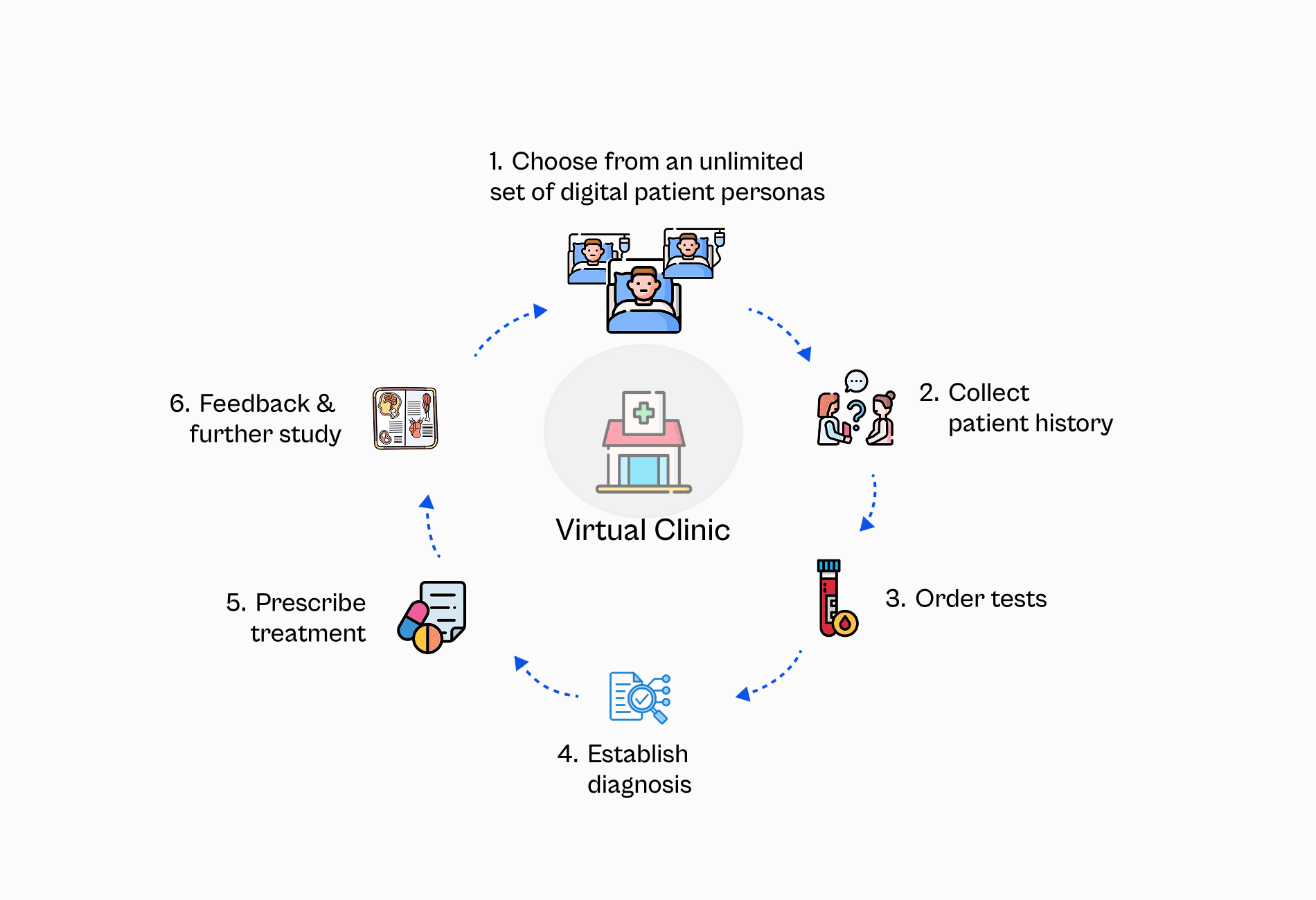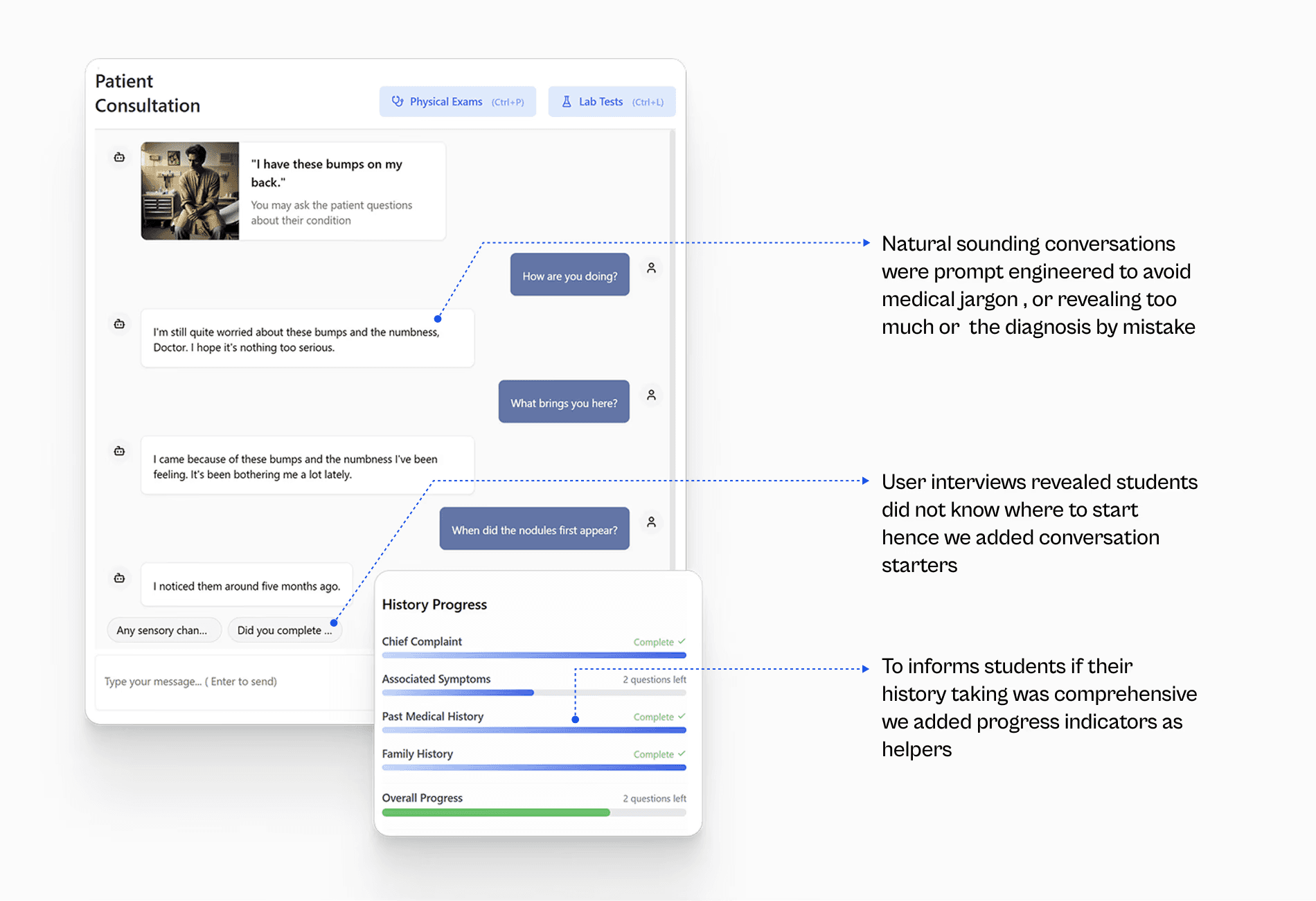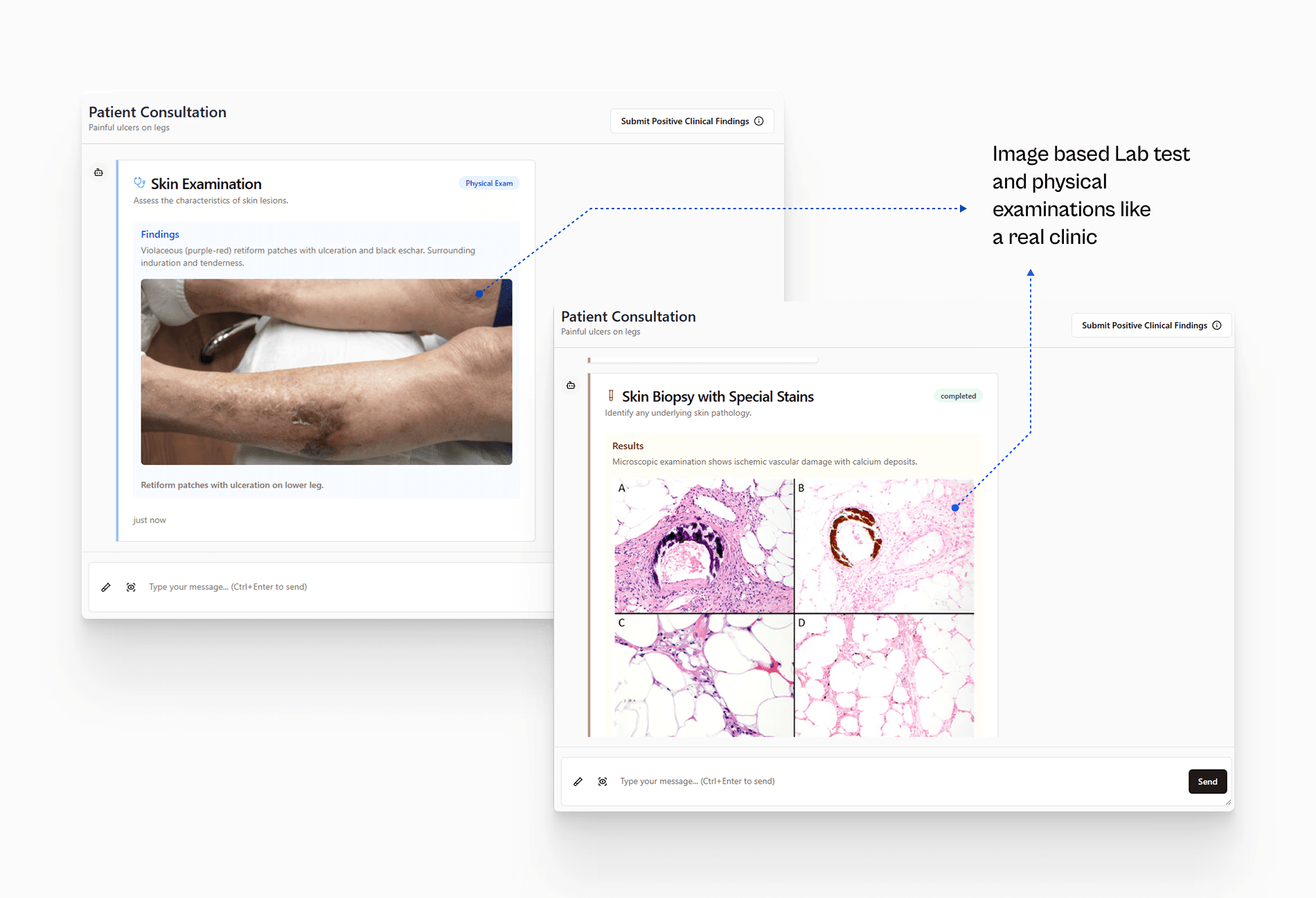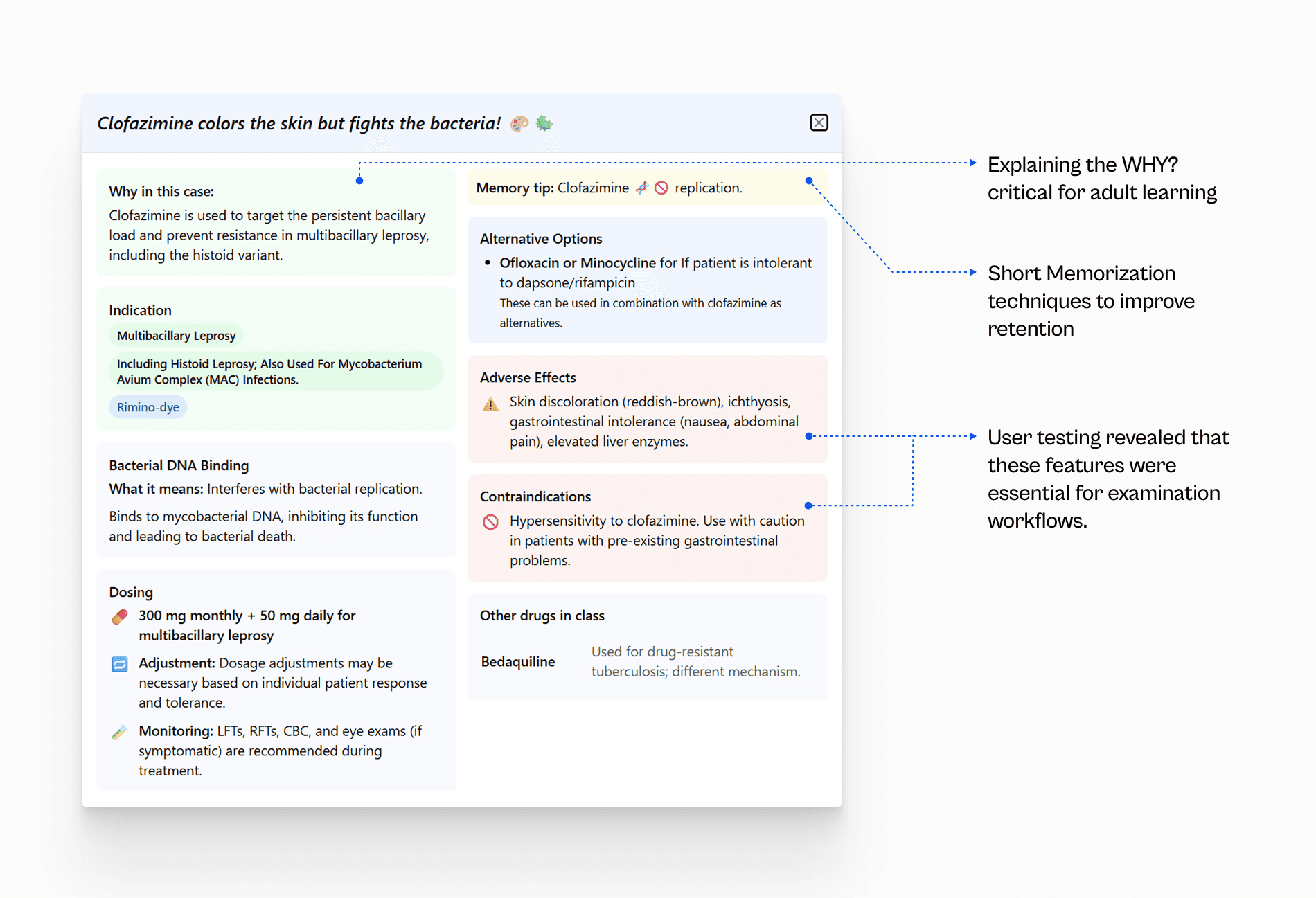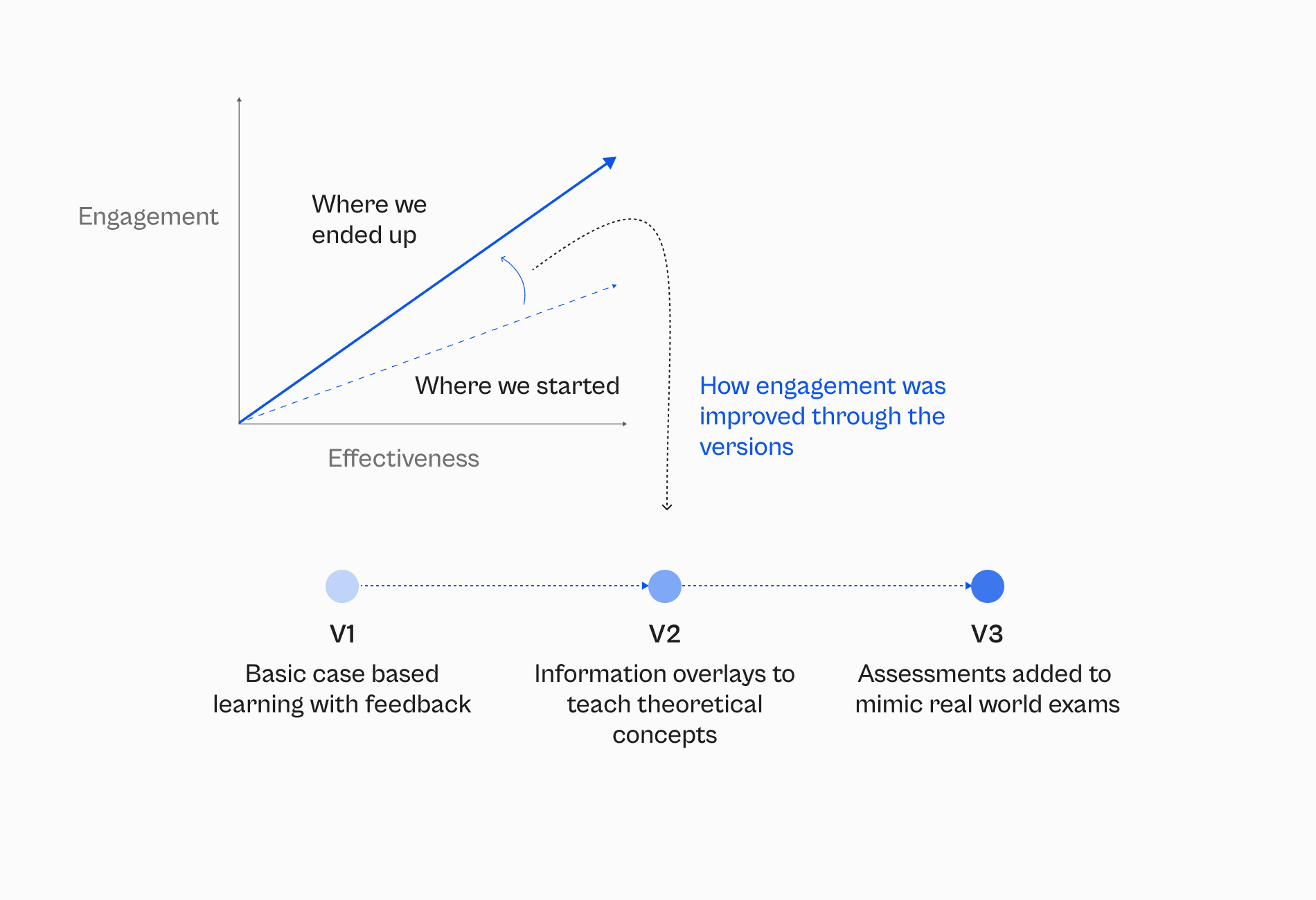
Casechat
About the project
Role:
Co-founder - Leading Product Strategy, Design and Developement
Team:
CPTO - Cyril Varghese CCO - Dr Gopikrishnan Anjaneyan
Tools and Frameworks
Svelte, fastAPI, Supabase, OpenAI/Gemeni APIs, Figma, Figjam, Cursor
Project Details
Medical students often lack safe, hands-on ways to practice clinical decision-making.
CaseChat is a hands-on learning platform that uses AI to simulate digital patients in virtual clinical environments, allowing medical students to learn by treating patient cases, making mistakes, and refining their reasoning like real doctors but without real-world consequences.
" We wanted a way to make clinical reasoning visible and teachable — and give students a tool where they don’t just receive knowledge, but build it through experience. That’s what CaseChat is "
Dr Gopikrishnan Anjaneyan
Co-Founder, Associate Professor of Dermatology at AIMS Cochin
Medical Learning Today
Medical education still relies heavily on lectures and self-study from dense textbooks, with limited opportunities for real clinical exposure. Despite bedside teaching being the most valuable learning experience, students spend only about 20% of their time in hands-on learning with actual patients.
Students do not get enough clinical exposure
From my user interviews and field studies, I found that teachers are overburdened and students are underprepared and lacked clinical exposure when it comes to real clinical learning.
I found students and doctors feel constrained by an outdated learning system. Students struggle to connect theory to real-world practice and find lectures unengaging, while doctors view case-based learning as essential but lack the time to create and deliver it effectively.
What if Every Student and Teacher Had Access to a Patient?
Patient cases bridge the gap between theory and practice. They allow teachers to explain concepts through the lens of real patient care and help students apply what they learn in a clinical context, making learning more engaging, memorable, and practical.
A Virtual Clinical Environment with Unlimited Patients Is Better
A virtual clinic lets students practice every stage of patient care—from history-taking to treatment—without real-world constraints. By simulating unlimited digital patients, it offers continuous, hands-on learning and personalized feedback, helping students build clinical confidence and mastery over time.
Visual Assets and Features
I started by designing interfaces in Figma, but once the design system was in place, many changes were made directly in the codebase. This allowed faster iteration during user testing sessions to validate our hypotheses. The main visual challenge was organizing dense information into a clear visual hierarchy—making it easy to scan without overwhelming users with too much data.
Case library with cases grouped by a specialty
Chat with the patient engaging in history collection
Perform physical examiniation and lab-tests like a real clinic
Deciding on a diagnosis and a differential
Personalized feedback on case performance
Suggestive diagnostic timeline for guidance
Drug information popup - to learn concepts while treating the patient
Demo Video
A recording of a student going through a simulated patient case
Learning What Truly Motivates Students
Students weren’t uninterested in becoming better clinicians — they simply connected most with learning that translated into visible progress. By bridging the gap between clinical reasoning and exam success, we created a more engaging and effective learning experience.
“We thought students wanted to think like doctors — but they were trying to succeed as students.
Success in exams was critical for that.”







